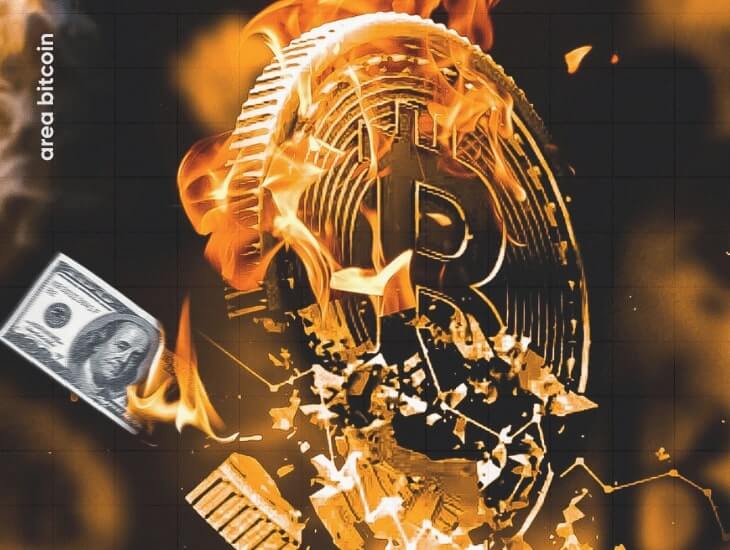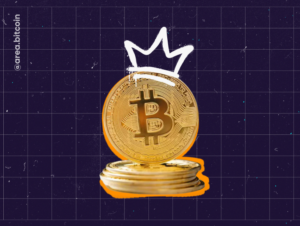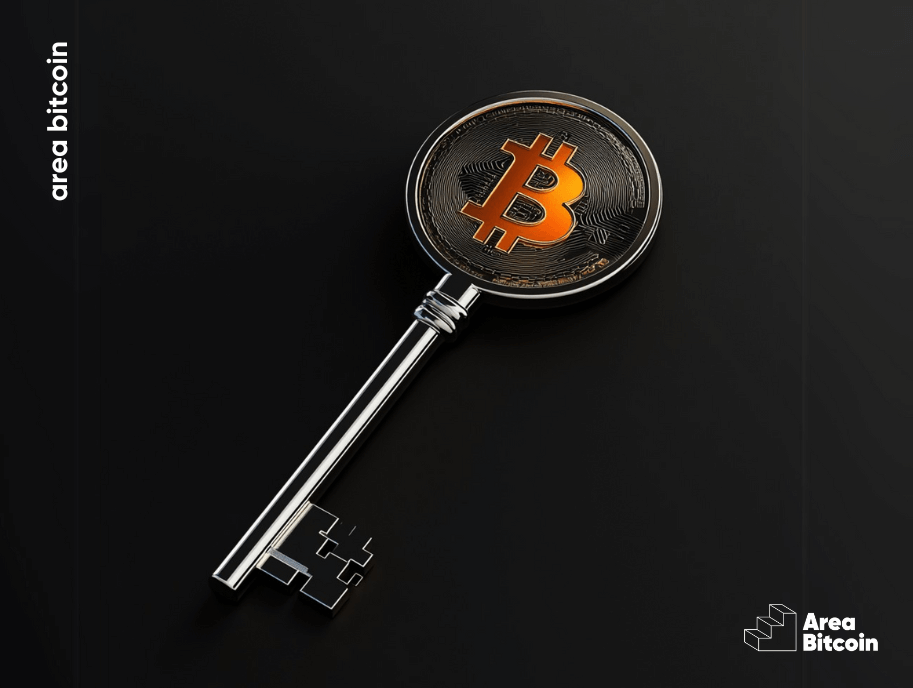Bitcoin has been attracting a lot of attention for its potential value increase and innovative technology. However, Bitcoin can also fail in some aspects.
Bitcoin has been a fortress, having overcome all the major obstacles since its inception, such as:
- the bugs in 2010 and 2013;
- the fall of Mt.Gox and FTX;
- the fork wars from the Bitcoin Cash era;
- Bans in China, India, and Russia;
- Rise of altcoins, diverting liquidity.
However, although Bitcoin has survived all of this, strengthened itself, and is increasingly becoming a store of value for the coming centuries, it doesn’t mean that victory is assured and it’s just about sitting and waiting.
So, how can we prepare for the worst and still hope for the best? What could make Bitcoin disappear?
Yeah, I know! Thinking about the end of Bitcoin is terrifying for any Bitcoiner. It feels like all the remaining hope in the world is vanishing, but this is a great abstraction exercise to reflect on.
Possible Points of Failure for Bitcoin
Bitcoin is one of the most popular cryptocurrencies in the world, with a market capitalization exceeding trillions of dollars.
However, Bitcoin is not immune to possible points of failure that could affect its operation and security.
In this discussion, we will explore some of the potential points of failure for Bitcoin, including security flaws, decentralization, and scalability.
Security Flaws
Security flaws are one of the main points of vulnerability for Bitcoin. Although the underlying technology of Bitcoin, the blockchain, is highly secure, there are some entry points for malicious attacks.
The possible flaws usually are the cracking of Bitcoin encryption with quantum computers and 51% attacks.
Cracking Bitcoin Encryption with Quantum Computers
Cracking Bitcoin’s encryption isn’t something simple.
Bitcoin uses Public and Private Key encryption that uses an algorithm called SHA256, in addition to Random Number Generators (RNGs), Hash Functions, and Elliptic Curve Digital Signatures (ECDSA).
The basis is SHA-256, because it creates a 256-bit sequence — a series of 256 zeros and ones. This contributes to an absurdly high number of possible combinations, more numbers than the amount of atoms in the observable universe!
Therefore, these are data generation mechanisms where it’s easy to verify if the information is correct, but it’s difficult to randomly find the answer.
In other words, it’s very difficult to simply guess a private key using brute force when a computer through zillions of attempts manages to find the private keys of a specific address.
So, this is extremely difficult and would require such a large number of attempts that a normal computer would take billions of years to find a particular private key.
In fact, it’s so unlikely that it has the same odds as winning the lottery not just once, but 9 times in a row!
Quantum Computer
That’s where the story of the quantum computer comes in.
For only a mega computer with absurd computational capacity could do such a thing.
This is one of the great hopes of Bitcoin haters.
However, quantum computers wouldn’t be such a big threat because if they managed to break Bitcoin’s encryption, several sectors of national security, including banks, airplanes, and even critical sectors of countries would also be exposed and at risk.
Moreover, if a quantum computer were to emerge, Bitcoin could be updated to a quantum-resistant encryption.
Thus, although this is a possibility, the reality is that we are still far from seeing quantum computers as a real threat.
51% Attack
A 51% attack could occur if someone were to obtain computational power exceeding 51% of the current hashrate, thereby monopolizing the issuance of new blocks.
However, executing this kind of attack is extremely challenging as it would require a massive amount of resources, such as bulk purchasing of ASIC machines, which are used to mine Bitcoin, along with an enormous energy source.
Besides, this operation would require massive logistics and could not be performed rapidly.
To put it in perspective, it would require about $63 billion just to reverse a single block in a double-spending attempt. Even then, such an attack would be easily detectable, as it would involve the purchase of practically all ASICs available in the market, drawing a lot of attention.
Moreover, Bitcoin has reached a hash rate of two hundred and sixty quintillion hashes per second, making this kind of attack even more difficult.
Bitcoin’s processing power is around 500 times more powerful than the most potent computer existing today. If a 51% attack were attempted, the network nodes could choose not to accept the blocks mined by the attacker, creating a hard fork in the network.
Hence, executing a 51% attack is considered extremely complex and challenging.
Only a global cataclysm affecting the planet and the atmosphere could impact Bitcoin’s security! Notably, various cryptographers like Nick Szabo and Ralph Merkle (the inventor of Merkle Trees) claimed that Bitcoin could even survive a nuclear war.
Decentralization Failure
Currently, Bitcoin is considered the only genuinely decentralized network, as there is no single entity centralizing the decision-making power for protocol updates.
Network nodes can easily be run by anyone, there is no hash rate centralization, and no one can prevent someone from utilizing the network.
Although mining pools exist, these pools do not control the machines that effectively produce the computational power.
These machines are distributed worldwide and can easily migrate from one pool to another. The pools do not control the hardware, and miners can indeed produce hashes on their own without needing to be connected to any pool.
In fact, a new update to mining software, known as Stratum V2, was launched to help end this FUD about the centralization of mining pools. It is just an excuse used by ‘shitcoiners’ to divert Bitcoin’s liquidity to their favorite ‘shitcoin’.
Attack on Decentralization by Governments
One way to attack Bitcoin’s decentralization would be through the governmental prohibition of mining, using Bitcoin as a currency, maintaining offline wallets (hodl), and even prohibiting running nodes and owning hardware wallets. This would force people to use centralized banks and exchanges, which would weaken Bitcoin’s decentralization.
However, despite these efforts, it is very challenging for governments to control 100% of the time nodes, wallets, miners, coins, etc.
Bitcoin is P2P and doesn’t necessarily need a participant from the fiat system.
Thus, any government trying to ban, create restrictive rules, or try to centralize Bitcoin is excluding itself from the Bitcoin network, not the other way around.
Overregulation will force Bitcoiners to migrate from the more closed jurisdictions. People will simply opt out and move to somewhere more receptive to Bitcoin.
Banning triggers the Streisand effect, which makes the prohibition backfire, drawing more attention and making what was banned even more desirable and attractive than before.
Failure of Bitcoin Adoption
In our analysis, Bitcoin’s biggest risk of failure, which few people pay attention to or consider important, is the lack of adoption.
It’s if people continue using the current system, losing purchasing power by using currencies that devalue day by day, or even worse, using other currencies that simply recreate the fiat system but with another guise, which is the case with altcoins.
Altcoins vie with Bitcoin for liquidity, which is why many are marketed as being better than Bitcoin in various ways when they are not.
This is called an affinity scam:
It’s like Bitcoin but faster, more useful, or more stable.
However, the good news is that Bitcoin’s incentives are pointed toward adoption.
The programmed scarcity and supply shocks create cyclical demand increases, and this cannot be changed.
Other fiat or cryptocurrencies do not have the same properties, so they tend to fall one by one over time.
The lightning network is solving scalability issues and allowing Bitcoin to be sent and received at lightning speed, thus ending most scalability criticisms.
How to Kill Bitcoin Definitively?
The only way to “kill” Bitcoin would be to destroy all the nodes hosting copies of the blockchain. However, even if only one honest node survives, the network can continue growing and creating new copies from it.
This means it is extremely hard to destroy Bitcoin completely, as the network is distributed globally and does not depend on a single central point of failure.
There are tens of thousands of nodes hosting copies of the Bitcoin blockchain since the genesis block, spread all over the world. Furthermore, initiatives like the Blockstream Satellite project make Bitcoin’s blockchain data available via satellite, making the network even more resilient to possible attacks.
Therefore, to kill Bitcoin, all these copies would need to be extinguished, on the ground and in the atmosphere! If a nuclear war, an asteroid, or a cataclysm happened, humanity would probably be destroyed, leaving only cockroaches and Bitcoin behind.
So, what is the real threat that could make Bitcoin fail or die?
The only genuine threat to Bitcoin would be if Central Banks and governments do a good job, do not print money, and do not devalue their own currency.
If they did that, people would have no reason at all to resort to Bitcoin, and perhaps Satoshi Nakamoto would not even have released the whitepaper in 2008.
However, we are increasingly far from this possibility.
Inflation is high worldwide, and the printers keep working. Governments will not give up their printers, which is why Bitcoin tends to be adopted as people will, out of necessity or curiosity, seek ways to protect themselves.
Bitcoin Will Remain the Same
The significant difference is that each person will adopt Bitcoin at the speed of their understanding and at the price they deserve.
Those who scoff, speculate, or ban will pay a higher price for the lesson.
It’s challenging to find well-founded criticisms of Bitcoin about the real possibilities of its ending.
Many things can go wrong with Bitcoin, as we are just at the beginning of the adoption process. However, many other things can go right, and they are already going right because Bitcoin was made to last, and that’s exactly what it’s doing.
Share on your social networks:
Area Bitcoin is an educational Bitcoin school that aims to accelerate the financial and intellectual sovereignty of all individuals.
Did you like this article? Consider buying us a cup of coffee so that we can keep writing new content! ☕







